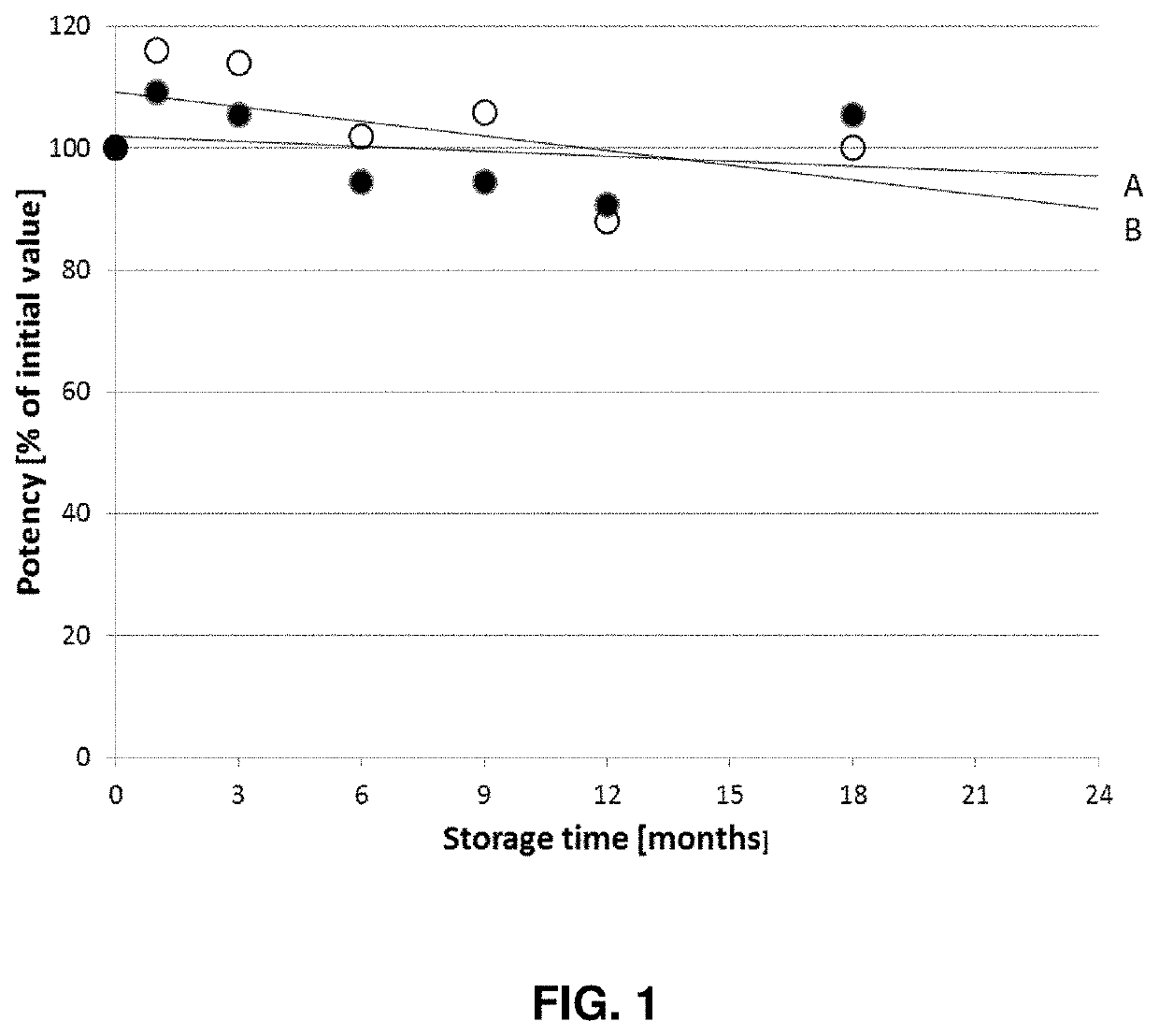Botulinum toxin prefilled plastic syringe
a technology of plastic syringes and botulinum toxin, which is applied in the field of prefilled plastic containers, can solve the problems of loss of biological activity during production, loss of bioactivity during reconstitution and/or storage of protein-containing pharmaceutical compositions, and high instability at alkaline ph and heat-labile, and achieves convenient, safe and simple manner.
- Summary
- Abstract
- Description
- Claims
- Application Information
AI Technical Summary
Benefits of technology
Problems solved by technology
Method used
Image
Examples
examples
[0112]The following examples show that, contrary to expectation and common belief in the art, an aqueous botulinum toxin formulation stored in a prefilled syringe system exhibits an excellent stability for a prolonged time period (e.g., for 9-12 months) at standard refrigerator temperature (2-8° C.). Furthermore, extrapolation of the measured stability data indicates that the prefilled botulinum toxin syringe is highly stable for at least 12 to 24 months at 2-8° C.
[0113]Accordingly, the botulinum toxin's presentation can be changed from a lyophilized vial to a prefilled plastic syringe format, which meets the demands of physicians and patients looking for easier, safer and more accurate modes of administration.
Materials & Methods
[0114]An aqueous botulinum liquid botulinum toxin formulation was prepared by dissolving 1.0 mg human serum albumin (HSA), 4.7 mg sucrose, and incobotulinum-toxinA in 0.9% saline to a concentration of 50 U / ml. The formulation was then filled into a syringe p...
PUM
 Login to View More
Login to View More Abstract
Description
Claims
Application Information
 Login to View More
Login to View More - R&D
- Intellectual Property
- Life Sciences
- Materials
- Tech Scout
- Unparalleled Data Quality
- Higher Quality Content
- 60% Fewer Hallucinations
Browse by: Latest US Patents, China's latest patents, Technical Efficacy Thesaurus, Application Domain, Technology Topic, Popular Technical Reports.
© 2025 PatSnap. All rights reserved.Legal|Privacy policy|Modern Slavery Act Transparency Statement|Sitemap|About US| Contact US: help@patsnap.com

